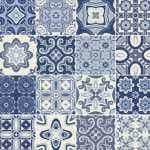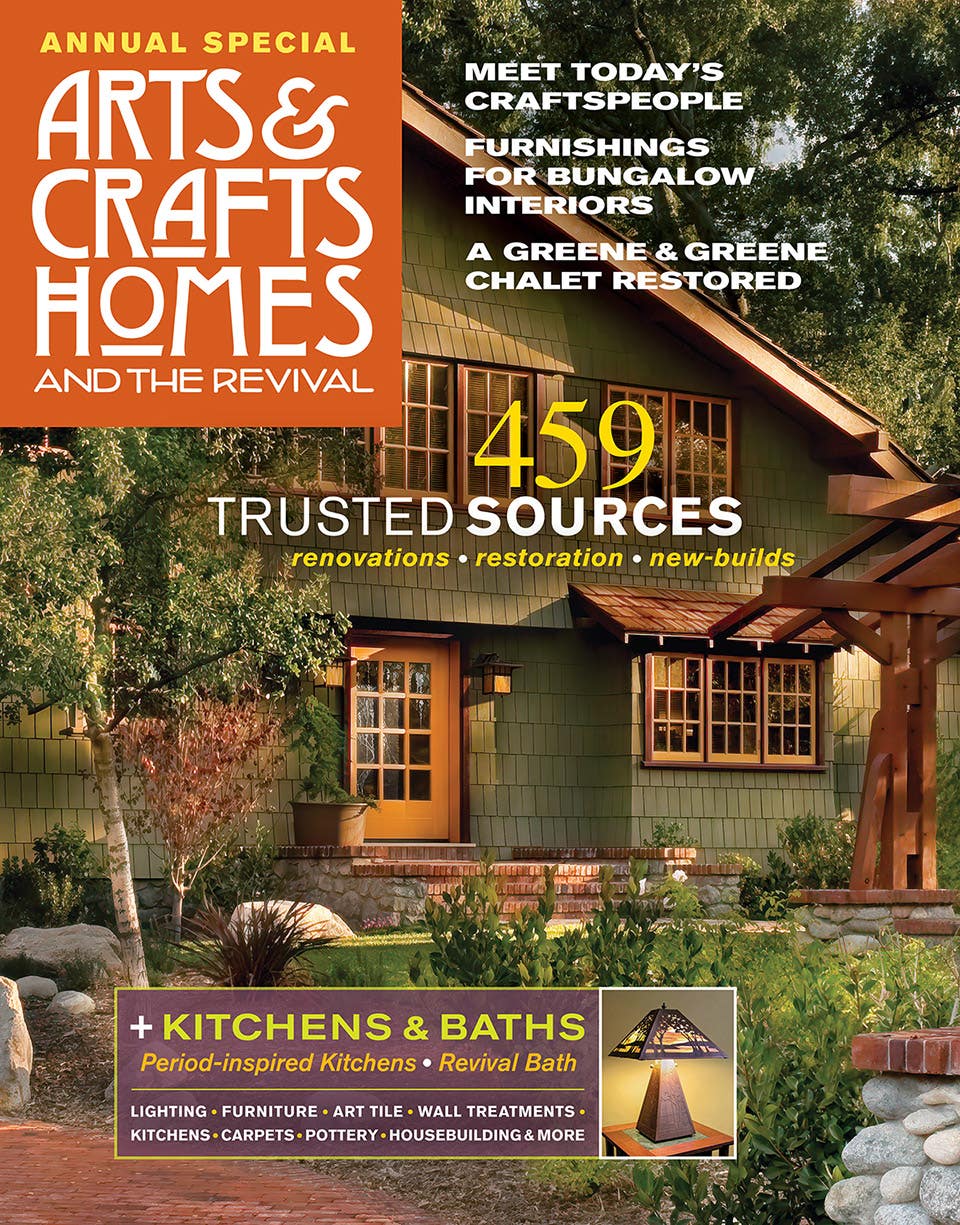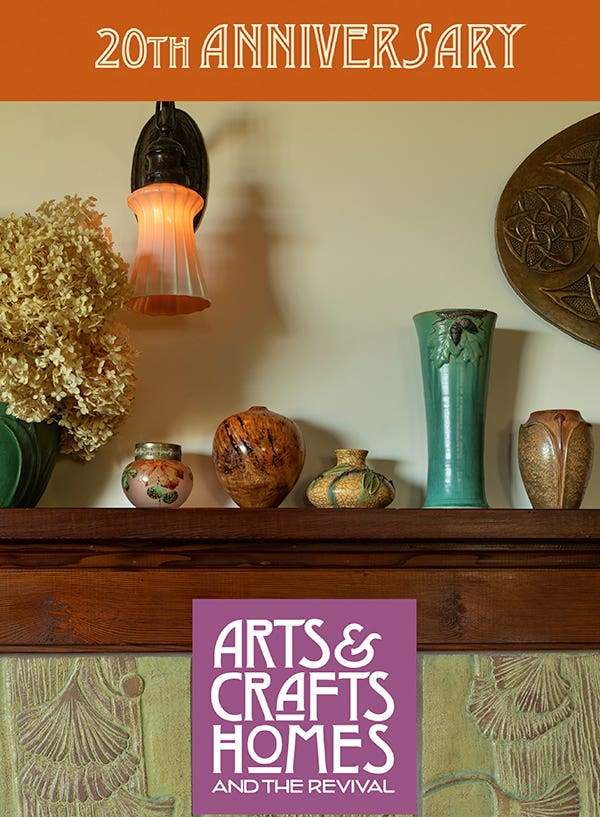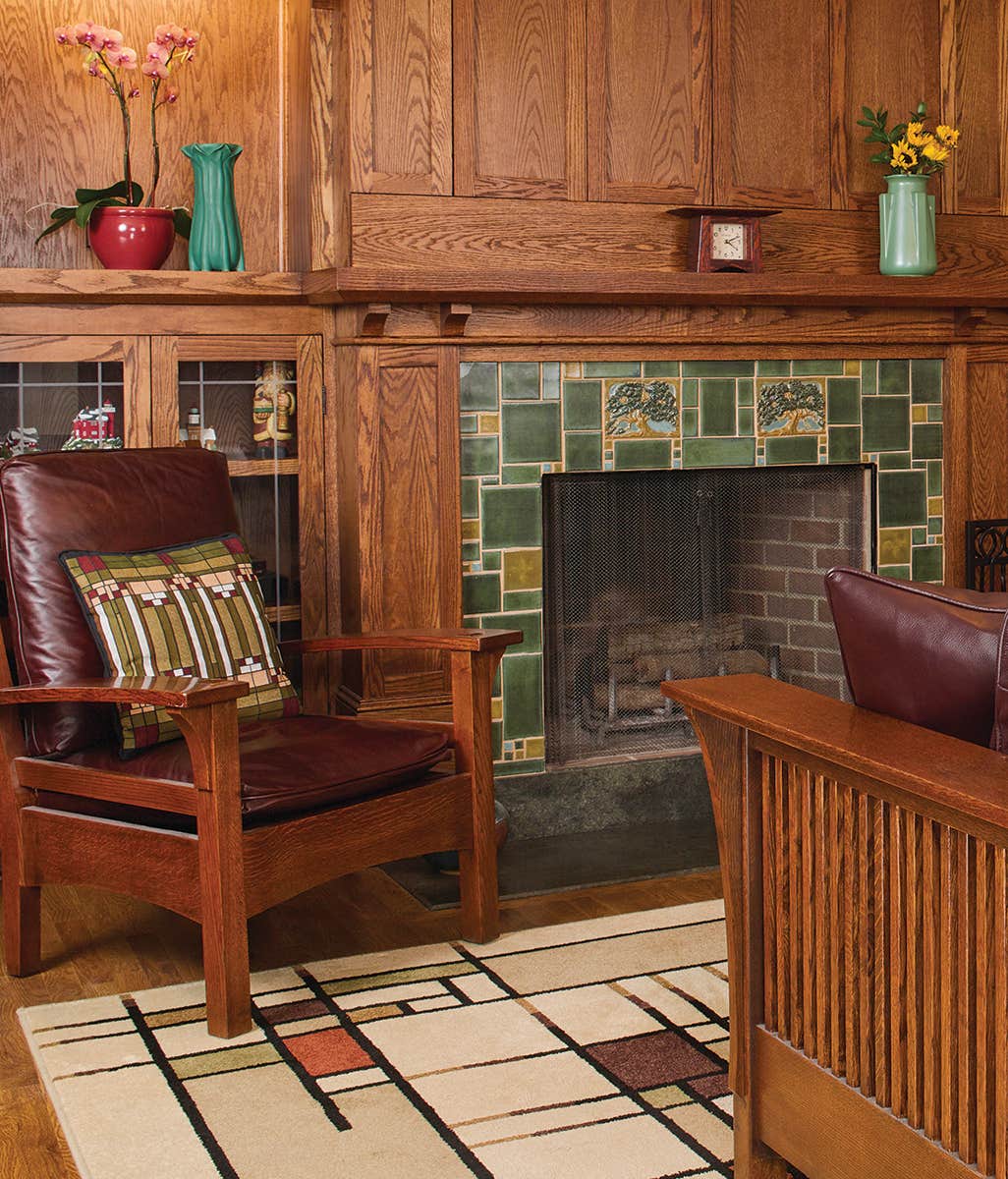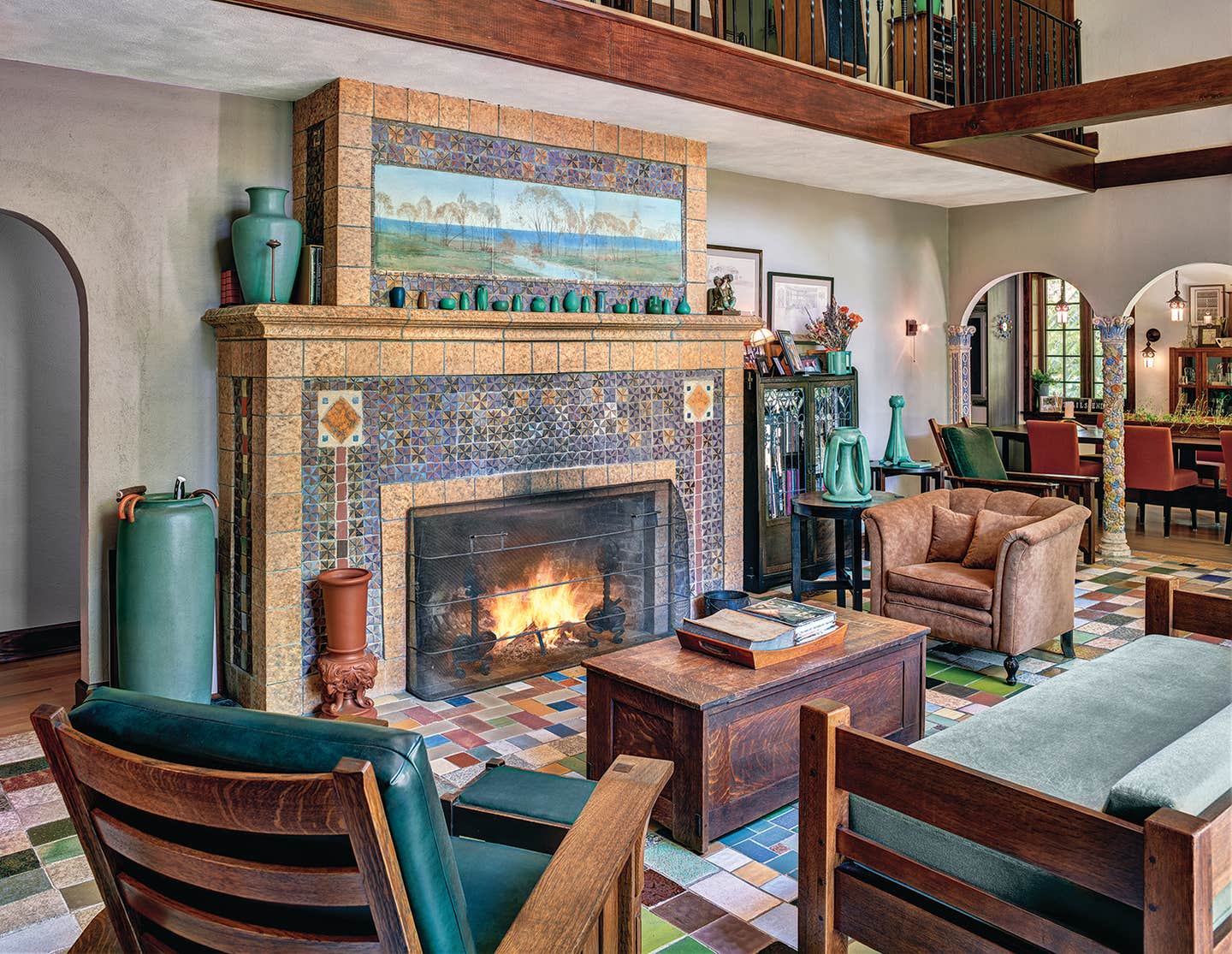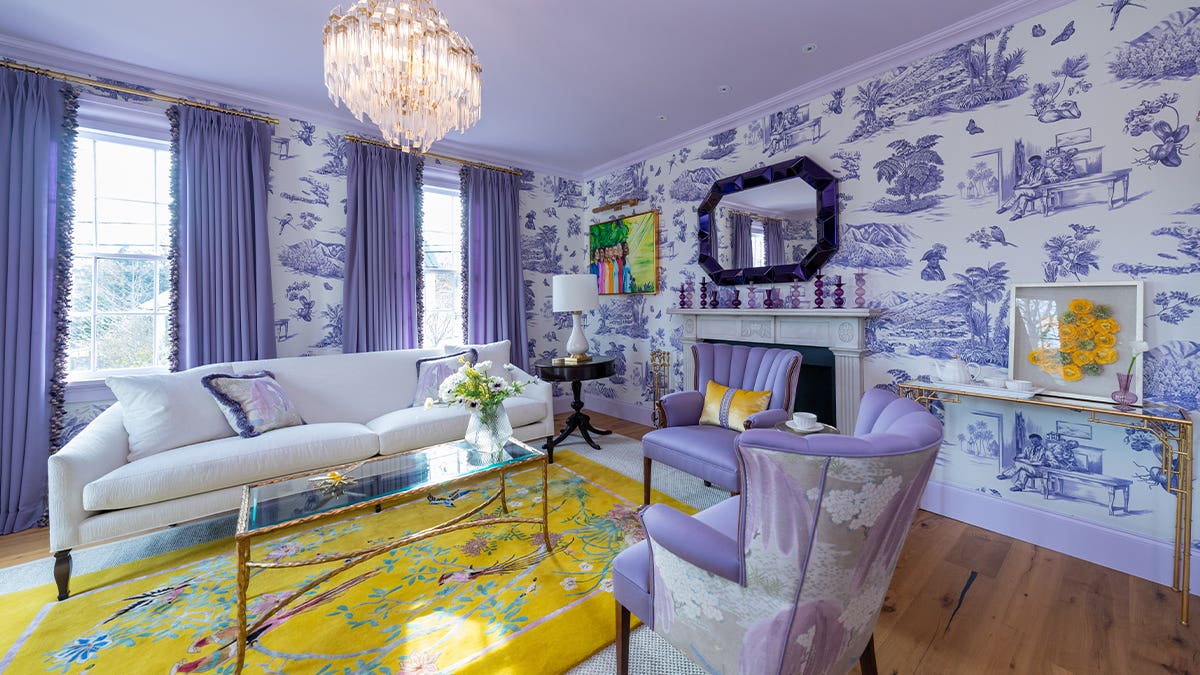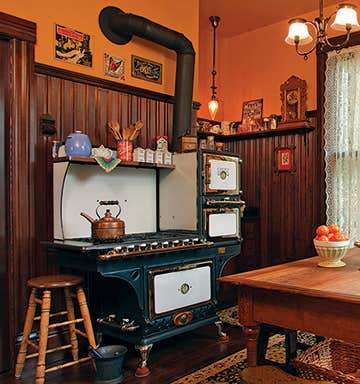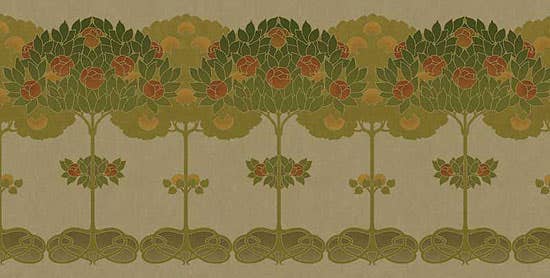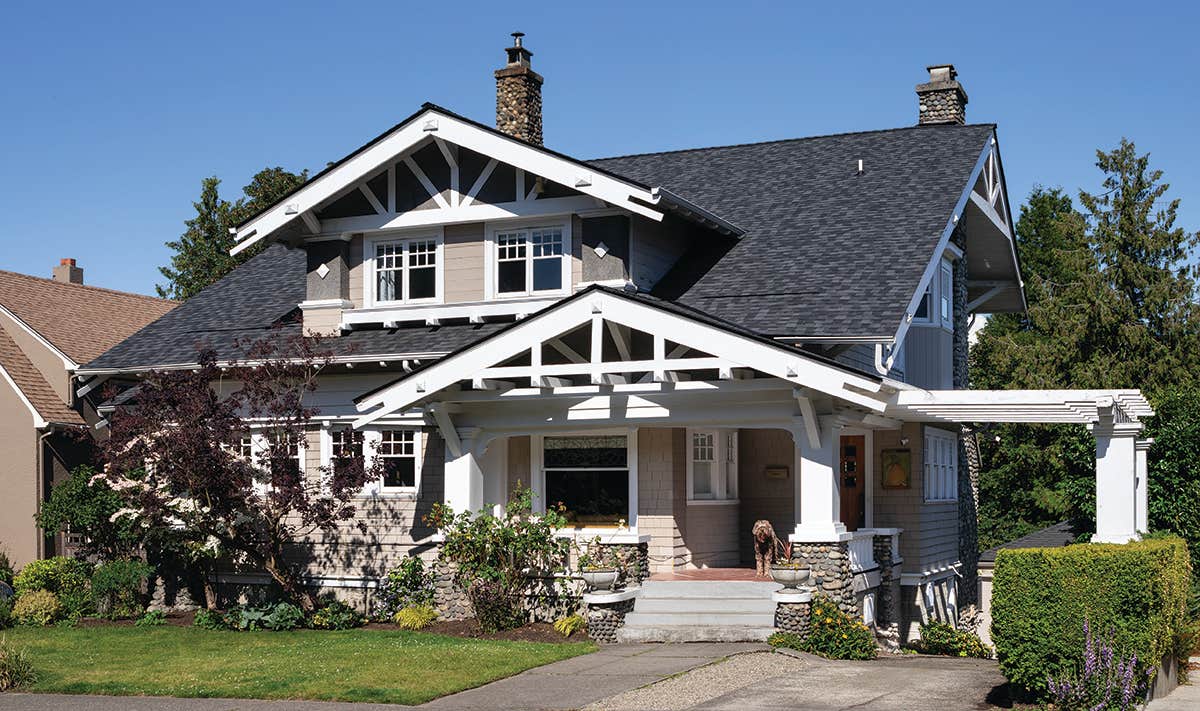Not Just for Kitchen & Bath
Tile is used not just in the kitchen and bathroom but also for fireplace surrounds, entries—and floors! Tile is a durable flooring that is also artistic, both in its intrinsic body and color and because of the patterns in which it can be laid.
Manufactured ceramic tile is available and appropriate in hexagons, octagons, oblongs, diamonds, and rhomboids, with a limitless range of patterns. Mesh-mounted basketweave and herringbone tiles update early 20th century patterns in a host of colors. Mosaics, too, can be laid for different field effects and to create borders.
Geometric and encaustic tiles, favorites during Britain’s Aesthetic and early Arts & Crafts movements, are durable floor tiles with a matte finish; variously shaped and colored, they can be designed into kaleidoscopic patterns.
The time-honored method of building up the patterns by pouring different-color slips into molds meant that colors don’t fade as the pattern wears down. Such traditional tiles (with straight edges meant to be laid with very narrow grout lines) are still available, as are “modern” encaustics that cost less.
The Arts & Crafts period saw an explosion of tile making, on the East Coast and West. Many companies today have revived the craft. And some of the originals are still in business: Henry Mercer’s Moravian Tile Works in Doylestown, Penn., now operated as a non-profit, still turns out the unique, embossed and decorated tiles that defined a style by themselves.
Stone has been an enduring medium for floors since, well, the Stone Age. Today’s floors are more likely to be beautifully cut slate and limestone or granite with some sort of man made relief—evidence of clefts and pick marks, for example. Concrete floors were used during the later Arts & Crafts period, by Frank Lloyd Wright and others. Today concrete, as itself or mimicking stone or tile, is a popular alternative. Do consider stone and concrete flooring as an appropriate natural material for back halls and mudrooms, foyers, sunrooms, and even kitchens and family rooms.
Patricia Poore is Editor-in-chief of Old House Journal and Arts & Crafts Homes, as well as editorial director at Active Interest Media’s Home Group, overseeing New Old House, Traditional Building, and special-interest publications.
Poore joined Old House Journal when it was a Brooklyn-brownstoner newsletter in the late 1970s. She became owner and publisher and, except for the years 2002–2013, has been its editor. Poore founded the magazines Old-House Interiors (1995–2013) and Early Homes (2004–2017); their content is now available online and folded into Old-House Journal’s wider coverage. Poore also created GARBAGE magazine (1989–1994), the first unaffiliated environmental consumer magazine.
Poore has participated, hands-on, in several restorations, including her own homes: a 1911 brownstone in Park Slope, Brooklyn, and a 1904 Tudor–Shingle Style house in Gloucester, Massachusetts, where she brought up her boys and their wonderful dogs.
